If you are searching for the best way to travel around China’s Yangtze River, I sincerely recommend you to choose our China Tour with Yangtze River Cruise. As the longest river in Asia, the Yangtze River has many unique sceneries. Our carefully arranged Chongqing Three Gorges River Cruise will take you to visit Qutang Gorge, Wu Gorge, and Three Gorges Dam. The decoration of the cruise is not only luxurious but comfortable. You can rest and enjoy the delicious food on the cruise while appreciating the beautiful scenery along the river. The China Yangtze River Cruise from Chongqing will also take you to Fengdu “Jade Emperor” and “Ghost City”. You can also watch the performance of the crew on the cruise and enjoy a delicious buffet. Our China Tour with Yangtze River Cruise will create so many memorable moments for you.

Today, you will arrive in Beijing and start your expected Yangtze River Cruise Tours from here. Beijing is the capital of China, full of cultural and historical charm along with a strong economy, and it is also a popular attraction for numerous tourists at home and abroad. With a total area of 16,410.54 square kilometers, Beijing is surrounded by mountains on three sides and flowed through by many big rivers. With our thoughtful arrangement, you can enjoy the fun of the tour at will.
After breakfast, we will head to Tian’anmen Square, which is located in the center of Beijing and has experienced more than 500 years of vicissitudes. Covering an area of 440,000 square meters, it is the largest urban square in the world, which can accommodate 1 million people to hold a grand rally. On the light-colored granite floor of Tian’anmen Square, there stands Tian An Men (Gate of Heavenly Peace), Monument to the People’s Heroes, Chairman Mao Memorial Hall, Labouring People’s Cultural Palace and Zhongshan Park. People’s Republic of China held the founding ceremony here on October 1, 1949. Since then, Tian’anmen Square has become the symbol of modern China.
Then we will walk to the Forbidden City (closed on Monday), one kilometer north of Tian’anmen Square. The Forbidden City is the imperial palace of the Ming Dynasty (1368-1644) and Qing Dynasty (1636-1912), located in the center of the central axis of Beijing. The Forbidden City covers an area of about 720,000 square meters, with more than 70 palaces and more than 9,000 houses. The Hall of Supreme Harmony, the Hall of Complete Harmony and the Hall of Preserving Harmony are the main buildings among these buildings. Walking in the Forbidden City, these well-preserved and magnificent buildings will help you travel back to Ming and Qing dynasties.
Jingshan Park is located in the north of the Forbidden City, separated by a moat. It used to be the imperial garden of the Ming and Qing dynasties, and was turned into a park in 1928, with a total area of 230,000 square meters, including 1,100 square meters of flowers. There is a peony garden in Jingshan Park, with 569 peony varieties and a total of more than 20,000 plants. Therefore, flower exhibitions, bonsai exhibitions and various cultural activities are often held in the park. If you are lucky, you can attend the exhibition. Besides, there was an old locust tree leaning eastward in Jingshan Park, where Emperor Chongzhen of the Ming Dynasty hanged himself. It is said that in the late Ming Dynasty, the insurgent forces invaded Beijing in March 1644. Emperor Chongzhen fled to Jingshan on March 19. He felt ashamed of his ancestors and committed suicide on the branch of the leaning locust tree with his belt. During the Great Proletarian Cultural Revolution, the old locust tree was cut down. But another old locust tree was transplanted at the original site in 1981. In 1996, the Park Management Office transplanted an ancient locust tree with an age of more than 150 years to the original place of the old locust tree, replacing the small locust tree transplanted in 1981.
In the afternoon, we will take a rickshaw to visit Hutong. Hutong refers to the small street between the main streets in villages or towns, which leads to the interior of residential areas. Quadrangles are generally on both sides of Hutong. Quadrangle is a kind of building surrounded by four houses in a symmetrical form. The small street between quadrangles is Hutong. We will visit a family, and you can learn paper cutting from the family. Paper cutting is a kind of folk art that cuts or carves patterns on paper. When you go home, you can teach your relatives and friends how to cut paper.
Then we will go to the Summer Palace, which was a royal garden in the Qing Dynasty. It covers an area of about three square kilometers and the area of water accounts for about three quarters. The palace is mainly composed of Longevity Hill and Kunming Lake. And there are more than 3,000 buildings with various forms in the palace. The Hall of Happiness and Longevity is one of the main buildings here. It was originally built in 1750 and rebuilt in 1887. Facing Kunming Lake and leaning against Wanshou mountain, it is the best place to admire the beauty of the park. Besides, there is a plaque written by Emperor Guangxu. Bronze deer, cranes and vases are displayed in the courtyard, along with the blooming magnolia, Begonia, peony, etc.


After breakfast, we will drive northwest for about one hour and ten minutes to Ming Tombs. It is about 50 kilometers away from Tiananmen Square. Ming Tombs, located at the south foot of Tianshou Mountain, is the largest mausoleum group of the Ming Dynasty, with a total area of more than 120 square kilometers. Thirteen emperors, twenty-three queens, two princes, over thirty concubines and two eunuchs were buried here. We will go to the Sacred Way. It refers to a road in front of Chang Tomb, with a total length of about 7.3km. A stone arch, Three-hole Bridge, Grand Palace Gate and other buildings are successively built along the Sacred Way from south to north. The stone arch is the first building on the way. It was built in 1540 to honor the great achievements of ancestors. Then we will go to the Ding Tomb, in the southwest of Chang Tomb. It is the tomb of Emperor Zhu Yijun of the Ming Dynasty, with his two queens buried. Ding Tomb, built from 1584 to 1590, covers an area of 182,000 square meters. And it is the only excavated one among the Ming Tombs.
After enjoying the delicious lunch, we will drive northwest for about fifty minutes to Badaling Great Wall. As an important part of the Great Wall, it was a pass of the Great Wall of the Ming Dynasty and an outpost of Juyong Pass. There are many legends about the origin of the name of Badaling Great Wall. One of them is that because the mountains are numerous and the terrain is steep, it had to turn eight bends and cross eight large mountains to build the Badaling Great Wall. It was difficult to build this section of the Great Wall in those years, so the construction period was delayed. And eight supervisors died during the construction. Later, an Immortal told workers eight methods to continue the project. The eight methods are to transport building materials to the mountains through eight animals such as tigers, sheep, swallows and turtles. By using these methods, Badaling Great Wall was built successfully. So people called this section of the Great Wall “Badaling Great Wall” (which means eight large mountains), and later, it was named Badaling Great Wall according to the homonym.

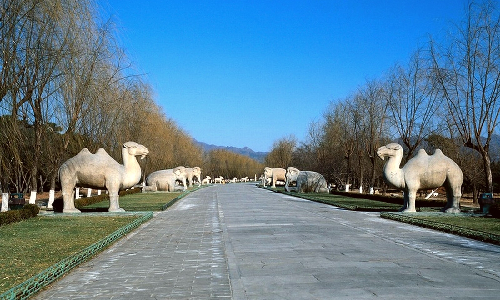
 Xi’an
Xi’an The first attraction for today is the Temple of Heaven. It is in the south of Beijing, covering an area of about 2.73 million square meters. The Temple of Heaven was first built in 1420 and rebuilt in the Qing Dynasty. In the Ming and Qing Dynasties, it was a place for emperors to worship Heaven and pray for a good grain harvest. It includes two altars, the inner altar and the outer altar. The altar wall is square in the south and round in the north. The main buildings are distributed in the inner altar, including the Imperial Vault of Heaven, the Circular Mound Altar, the Hall of Prayer for Good Harvests, etc.
After lunch, you will be escorted to the train station to take the estimated high-speed train G57 14:00/18:24 to Xi’an. Your experienced guide and driver will be waiting for you and then you will be transferred to the hotel. Xi’an is the capital of Shaanxi Province and an important city in Western China. Its total area is 10,108 square kilometers and the permanent population is nearly 13 million. Adjacent to the Weihe River in the north and Qinling Mountains in the south, Xi’an is located in the middle of Guanzhong Plain. Besides, it is the starting point of the Silk Road. In history, Xi’an was the capital of more than ten dynasties. Many scenic spots in Xi’an have been listed in the World Heritage List, and its cultural and historical details are waiting for you to explore.

We will first visit the Terra Cotta Warriors and Horses Museum, located to the east of Xi’an, and about forty kilometers away. Terracotta warriors and horses are a category of ancient tomb sculpture, which refers to the sacrificial objects made into the shape of soldiers, horses and chariots. It was listed in the World Heritage List in 1987 and it is also known as the eighth wonder of the world. More than 200 foreign heads of state and government have visited it successively. It has become a business card of China’s brilliant ancient civilization. There is a legend about the terracotta warriors and horses. It is said that after the unification of the six countries, Qin Shihuang, the First Emperor of Qin (221 BC-207 BC), began to build his mausoleum. He convened thousands of men to work day and night. One of them, Jiang, had been in the mausoleum for three years. His wife came to see him but was refused by soldiers. She waited outside, exhausted all means, and never saw her husband. Finally, she starved to death outside the mausoleum. The soldiers outside were moved by her loyalty, buried her outside the mausoleum, and spread her story. Later, it came to the ears of Jiang. Even if Jiang was heartbroken, he had to continue his work. Finally, after the mausoleum was completed, Jiang looked forward to paying homage to his wife. But at this time, soldiers appeared in front of them with weapons. In order to keep the secret about the Qin Shihuang’s mausoleum, these workers had to die here. Jiang was also on the verge of despair. He knelt down in front of the soldiers and begged them whether they could make him into a living terracotta warrior to guard his wife’s grave forever. Finally, the soldiers were moved by him and made him into a terracotta warrior.
After lunch, we will drive southwest for nearly 1 hour to Big Wild Goose Pagoda. It is the pagoda of Da Ci’en Temple (the Great Loving Kindness Temple), so it is also called Ci’en Temple Pagoda. In 652, Monk Xuanzang presided over the construction of the Big Wild Goose Pagoda to preserve the scriptures and statues of Buddha brought back to Chang’an from Tianzhu via the Silk Road. At first, the pagoda had five floors, and then it was rebuilt into nine floors. Later the number and height of floors were changed several times. Finally, it became the seven-story pagoda we see now.
Then we will drive northwards for nearly thirty minutes to the Great Mosque, a Chinese palace-style building group with a long history and a large scale. It is the integration of Islamic culture and Chinese culture. The construction of the temple started in 742 and was later confirmed by scholars to be completed in the Ming Dynasty. The total area of the whole temple is 13,000 square meters. The temple has a large wooden archway with a height of 9 meters built in the early 17th century, with a glazed-tile roof and fine carvings. The whole temple is square and divided into four courtyards. The second courtyard has the authentic calligraphy works of ancient Chinese calligraphers. The fourth courtyard has a hall with an area of about 1,300 square meters, which can accommodate more than 1,000 people to worship.
The next attraction is Muslim’s Quarter, which is an extremely popular attraction in Xi’an. It is a famous street full of delicious food and a strong cultural atmosphere. The place where Muslim’s Quarter stands was originally the imperial district of the Qing Dynasty. In the late 1990s, some Hui people rented houses and operated catering in this street. Muslim’s Quarter consists of several streets and on both sides of the street, there are various stalls with electric lights and steam lights, mainly selling cakes, dried fruits, preserves and snacks. Behind these stalls are many restaurants. You can enjoy barbecue kebabs and instant boiled tripe here. There are also many handicrafts, such as woven slippers, hats. You can buy some for your friends and you can bargain with the stall owner.
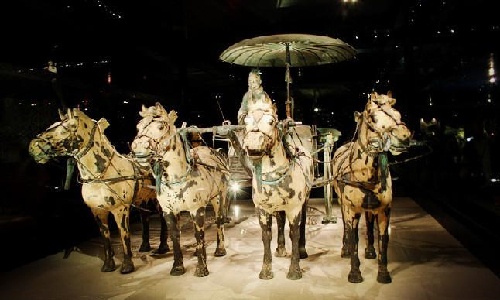
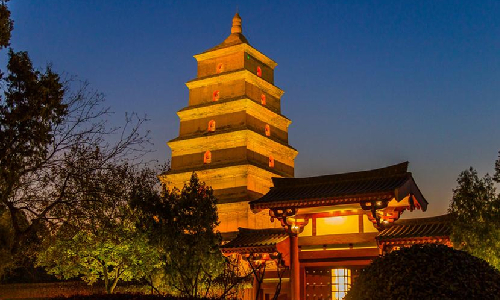
 Guilin
Guilin Today you will be transferred to the airport and take the estimated flight 3U3269 14:45/18:10 to Guilin. Guilin is a city under the jurisdiction of Guangxi Zhuang Autonomous Region. It is a world-famous scenic city with a total area of 27,800 square kilometers. Guilin has a subtropical monsoon climate with mild climate, abundant rainfall and sufficient light. Guilin has many forests and a wide range of wild animals, such as golden carvings, python, leopard, and so on. There are also typical karst landforms here, with grotesque peaks and green waters.
After breakfast, we will drive to the wharf to take the Li River Cruise, which allows you to take a panoramic view of the beauty of Li River. The interior decoration of the cruise is luxurious and comfortable. The cruise adopts international advanced equipment and facilities, which are safe and fast. You can sit in the cabin to taste delicious snacks while enjoying the beautiful scenery outside the cruise. And you also can stand on the deck, breathe fresh air and appreciate Guilin’s beautiful landscape. If you want to take pictures, our guide will recommend you some suitable angles. The cruise ship we arranged is three-star, providing Chinese box lunch. At the same time, we also provide a four-star cruise, which provides a Chinese buffet. If you need a four-star cruise, you can contact us.
After the Li River Cruise arrives in Yangshuo, we will go to Yangshuo West Street, which is a pedestrian street located in the center of Yangshuo ancient town. It is nearly 8 meters wide and 800 meters long. With a history of more than 1,400 years, it is the oldest and most prosperous street in Yangshuo. There are many well-preserved ancient buildings such as the Ming City Wall, temples, pavilions, former residence of celebrities, and memorial halls. Dr. Sun Yat Sen once gave a speech here, and Xu Beihong, an art master, once lived here. Leaders of more than 150 countries have come here. Beer fish is the specialty of Yangshuo West Street. Delicious beer and fresh fish will tickle your taste buds.
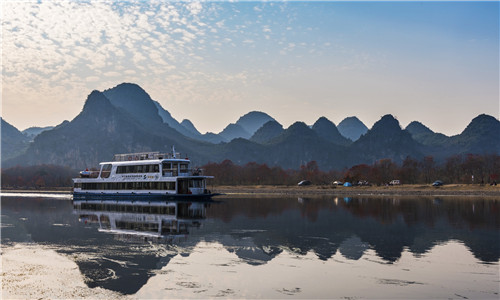
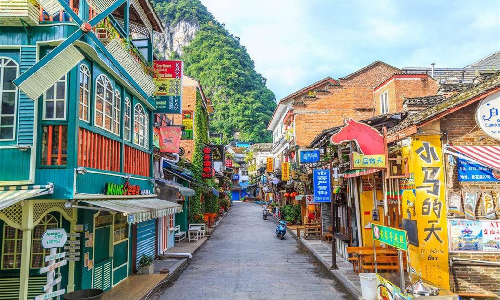
 Chongqing
Chongqing Today, you will take the estimated train G4114 (09:00-13:54) to Chongqing. The guide will pick you up and then take you to the Hongya Cave. Hongya Cave is one of the ancient gates of Chongqing. About 600 meters long along the Jialing River, it covers an area of 46,000 square meters and has a total of 11 floors. Its stilts and antique commercial streets attract many tourists every day. The stilt is a traditional local architecture. It is built along the mountain and river, with a simple structure. The antique streets here integrate food, entertainment, shopping and sightseeing. If you are lucky, you can see craftsmen beating Ciba (glutinous rice cake), cutting peach slices and baking peanut candy in the street. You can also go to a riverside café to taste delicious food and appreciate the scenery.
Then we will head to the Chaotianmen Dock. Here you will start your cruise tour on the Yangtze River. The Yangtze River is the largest hydropower river and the third-longest river in the world, as well as the longest river in Asia. It originates from the Qinghai-Tibet Plateau and flows through many cities, with a total length of 6,387 kilometers. It also has hundreds of tributaries flowing in all directions. The cruise will depart at 9 pm, and the guide will help you board the cruise in advance. Each room on the ship adopts a shock absorption design to reduce the interference of noise. During the voyage, bars and cafes will also be open. You can choose to sit in the cabin to rest or stand on the deck to breathe the fresh air and enjoy the scenery of the Yangtze River.


Today, you will have breakfast on the ship. Then you can rest in your room, drink a coffee in the cabin, or stand on the deck to feel the wind blowing from the river. If the weather is good, you can also see someone practicing Taijiquan on the deck. Taijiquan is a kind of traditional Chinese shadow boxing combined with Chinese philosophy and traditional Chinese medicine. It is good for your body. You can join them and learn some simple movements.
Then you will have a shore excursion. Fengdu “Jade Emperor” is located on Wuyu Mountain in Fengdu County. There is a Jade Emperor Hall here. It mainly enshrines and worships the Jade Emperor. The Jade Emperor refers to the Supreme God in ancient Chinese mythology. He manages the prosperity and decline of all things in the universe, and is regarded by the Chinese people as the god of supreme power. Besides, there is the Main Shrine Hall, the Medicine Buddha Hall, the Paradise Slide, and other scenic spots. The total length of the Paradise Slide is 980m. It is all built of natural granite and spirals down the mountain. You can also slide down while enjoying the beautiful scenery around you.
Then we will have an additional shore excursion to Fengdu “Ghost City”. If you want to participate, you can pay for an appointment on board in advance. Fengdu “Ghost City” has a history of nearly 2,000 years and is located on the north bank of the Yangtze River. It is famous for its various-shaped architectures. There are many buildings representing the nether world, such as Naihe Bridge, Huangquan Road and Wangxiang Terrace. Naihe Bridge is a necessary place for reincarnation in Chinese folk mythology. Beside Naihe Bridge, there will be an elderly female God called Meng Po, who will give each dead a bowl of soup to forget the memory of the previous life. Huangquan Road is the way to the nether world. Wangxiang Terrace is a terrace in hell from which the dead can see their homes.
You will have a buffet lunch on the ship, and then you can rest or play with your friends. In the evening, you will attend a Captain’s Welcome Reception. The buffet dinner will be offered. Besides, you can enjoy champagne, beer, juice and dessert. With the introduction of the host, the captain, general manager and department managers will come out to greet everyone. The captain will welcome the tourists on behalf of the cruise ship and toasted each tourist together. You can enjoy the crew’s artistic performance while eating the delicious food.

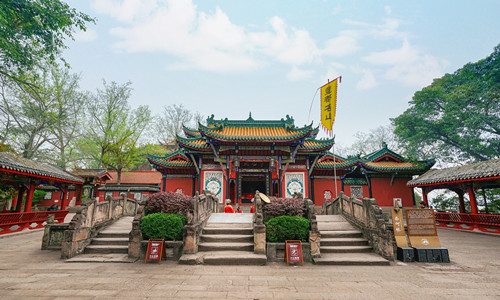
After breakfast, you can continue to join the group of Taijiquan if you like. Later, you will find our ship pass by Qutang Gorge. Qutang Gorge, eight kilometers long, is the shortest of the Three Gorges, but it is the most majestic and steepest. The banks of Qutang Gorge are like being cutting; the rock walls are towering; and the river surges in the cliffs. Qutang Gorge, eight kilometers long, is the shortest of the Three Gorges, but it is the most majestic and steepest. You will find that the two banks of Qutang Gorge are like being cut by a knife, that the rock walls are towering, and that the river surges in the cliffs.
We will also pass by Wu Gorge. Wu Gorge is also one of the Three Gorges, with a total length of 46 kilometers. There are many grotesque peaks, various-shaped rocks and steep cliffs. The twelve peaks of Wushan Mountain are located on the north and south banks of the gorge, which are the most famous scenic spots in Wu Gorge. Each peak has its own shape, standing high on the side of the Yangtze River. The most famous peak among them is Goddess Peak. On the peak, there stands a tall and graceful stone pillar, which looks like a graceful girl.
Then you will enjoy a buffet lunch on the cruise. And you will be transferred to a small ship to start a shore excursion. We will visit Goddess Stream. Goddess Stream, located on the South Bank of Wu Gorge on the Yangtze River, faces Goddess Peak across the river and originates in Guandu Town, Wushan County. It is recognized as the First Stream of Wu Mountain. The stream is 15 kilometers long, with fast current, and narrow channel, of which 10 kilometers are primitive valleys. And the banks of the stream are full of solid rocks. Then you will return to the cruise.
You will attend the Captain’s Farewell Banquet on the cruise. You can taste the delicious red wine. And at the same time, the captain and crew will deliver a farewell speech. After the speech, you can take photos with the captain and crew. Then you can enjoy the performance while enjoying the buffet dinner.


 Yichang
Yichang Shanghai
Shanghai Today we will get off the cruise to visit the Three Gorges Dam, which is an important stop in our Yangtze cruise tour. Located in Yichang City, Hubei Province, it is the world’s largest hydropower project, and took nearly 12 years to complete. The Three Gorges Dam is 181 meters high and about 2,308 meters long. The Three Gorges Dam is of great importance in flood control and navigation. There is an observation platform, which is the commanding elevation of the Three Gorges Dam. So you can stand on the observation platform to take a panoramic view of the dam.
Then our guide will pick you up at the Three Gorges Tourist Center and take you to Yichang Railway Station. You will take the estimated train G954 14:06-20:21 to Shanghai. Upon arrival, you will be transferred to the carefully selected hotel to rest. Shanghai is in the east of China, the estuary of the Yangtze River and the East China Sea. It covers a total area of 6,340.5 square kilometers and has a permanent resident population of 25 million. Shanghai has a humid climate, sufficient sunshine and abundant rainfall.
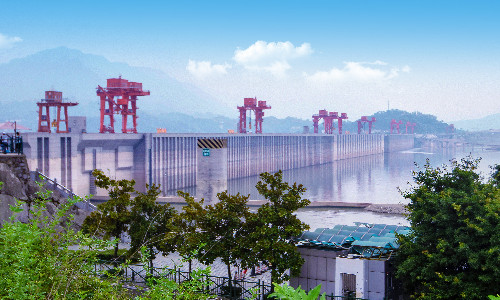

After breakfast, we will go to Zhujiajiao Ancient Town, located in the west of Shanghai and about an hour by car. The town has a total area of 136.85 square kilometers. The town is densely covered with rivers and ports. And there are nine long streets stretching along the river. Walking in the town, you can see thousands of Ming and Qing buildings standing against the water and 36 well-preserved ancient stone bridges. The town is different from the prosperous downtown area, but it allows you to feel its unqiue beauty from winding alleys, granite streets, and ancient buildings with blue bricks and tiles. You can sit in a tea-house to enjoy the tea, admire the bridge, and listen to the sound of the running river.
After lunch, we will visit the Bund, which refers to the bank of the Huangpu River in the Huangpu District of Shanghai. It used to be the British concession and now it is one of the most popular attraction in Shanghai. There are 52 classical buildings with different styles on the 1.5km-long Bund. The peace Hotel is located here, divided into the South Building and the North Building. The South Building was originally the Huizhong Hotel, and the North Building was the Chinachem Hotel. The former is one of the oldest existing hotels in Shanghai, built in 1854. And the latter is known as the First Building of the Far East, and in 1956 it was changed to a part of the Peace Hotel. You can take photos with this old building.
Then we will walk west for nearly fifteen minutes to Nanjing Road. It is the first commercial street in Shanghai after the opening up of the Shanghai, with a total length of 5.5 kilometers. In addition to modern high-end shops, hotels, and restaurants, there are many century-old shops, such as Lao Jie Fu (a velvet and satin shop, opened in 1860), Wu Liang Cai (the glasses company, founded in 1719), Lao Feng Xiang (a famous jewelry shop, founded in 1848). Besides, there are many delicious foods wating for you to taste, including biscuits, Cantonese dim sum, sliced duck, smoked fish, and fresh-meat moon cakes.
Shanghai Tower is a landmark building in Shanghai. It is 433,954 square meters, and its main building is 119 stories, with a total height of 632 meters. The express elevator can take you to the sightseeing platform on the 119th floor in only 55 seconds. If you look down here, you will find that the shape of Shanghai Center Tower is like a guitar pick, with the height rising, each layer is twisted nearly 1 degrees. And you can have a panoramic view of Shanghai, including the Oriental Pearl, the Bund, and the Financial Global Center. Meanwhile, you can see the winding Suzhou River and Huangpu River run to the Yangtze River and then enter the East China Sea.
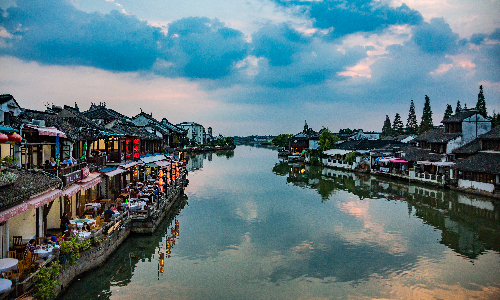

 Huangshan
Huangshan After breakfast, you will be escorted to Yu Garden (closed each Monday), which was originally a private garden with a history of more than 400 years. It was opened to the public in 1961, covering an area of more than 20,000 square meters. There are more than 40 ancient buildings in the park, such as pavilions, rockeries and ponds. Yu Garden has a stone peak called Jade Linglong, which is one of the three famous peaks in the south of the Yangtze River. The peak is about 1.5 meters wide, 3 meters high, 80 centimeters thick, and weighs about 3 tons. It has as many holes as honeycombs, and spring can flow through these holes and smoke can be emitted.
Then we will visit Jing’an Temple. It is located to the west of Yu Garden, about 5.5 kilometers and 15 minutes by car and its history can be traced back to 247. Jing’an Temple has a total construction area of 22,000 square meters, forming a pattern of a temple in front and a tower behind. It is composed of three main buildings, the Hall of Heavenly Kings, the Main Shrine Hall, and the Hall of Triple Saints. In Shanghai, the temple is the oldest Buddhist temple. And there are many calligraphy and painting works of famous Chinese masters in the temple.
After lunch, you will take the estimated high-speed train G7315 14:04-17:09 to Huangshan City. Upon arrival, you will be transferred to the local hotel. Huangshan is subordinate to Anhui Province, covering an area of 9,807 square kilometers. There are many mountains here, and the highest peak is 1,860 meters above sea level. It has a humid climate, with four distinct seasons and rich heat. Huangshan has a history of more than 2200 years. There are many places of historic interest and scenic beauty waiting for you to explore.


 Shanghai
Shanghai After breakfast we will drive northwards for nearly 1 hour to the Mount Huang Scenic Area. Covering an area of 160.6 square kilometers, it has more than 200 scenic spots. It is famous for its grotesque pines, various-shaped rocks, sea of clouds and hot springs. Mount Huang boasts thousands of peaks and towering valleys. There are 72 famous peaks, three of which are all above 1800 meters above sea level. Yungu Temple is located in the east of the scenic area, with an altitude of 890 meters. The temple is surrounded by peaks, bamboos, pines, cedars and tea trees. The roadside and riverbank at the south entrance of the temple are covered with stone carvings. Besides, there is the Lingxi Spring in front of the temple, and two famous ancient trees are near the temple. You can take the Yungu cable car to Beginning-to-Believe Peak, 1668 meters above sea level. It is said that Xu Xiake, a traveler in the Ming Dynasty, praised Mount Huang after visiting Mount Huang. Chen Jiubi, a county magistrate, first thought Xu Xiake was exaggerating. But when he arrived at the Beginning-to-Believe Peak, he was convinced by the scenery of Mount Huang and began to believe that Xu Xiake’s words were true, so he wrote an inscription here. This is the origin of this famous peak. From here, you can overlook the West Sea Grand Canyon, which is one of the 24 grand canyons in Mount Huang Scenic Area. This deep canyon is filled with cliffs, gullies, grotesque rocks and caves. Besides, you will find that pine trees vigorously grow in the rock cracks. Then you will head to Dispelling Cloud Pavilion, which was built in 1935. Because clouds and fog rise and roll in the valley and disappear in front of the pavilion, it is called Dispelling Cloud Pavilion. It is a long scenic pavilion, covering an area of 20 square meters. It is the best place to watch the wonderful scenery of Mount Huang, including the Flying-over Rock. Flying-over Rock is located on a flat rock and it is formed by natural weathering. The contact surface between the two rocks is very small, and the above rock seems to fly from the sky. Flying-over Rock is 12m high, 7.5m long and 2.5m wide. It is said that 2.6 billion years ago, the scenic area was a boundless sea. Many snake demons and turtle spirits here were making trouble to disturb the people. Later, an Immortal could not bear to see the suffering of the people, so he borrowed a stone from the Dragon King of the eastern sea and pressed it on the Feilai peak to suppress demons. Then we will head to the Bright Summit, one of the three main peaks of Mount Huang. Located in the middle of the scenic area, with an altitude of 1,841 meters, it is the second-highest peak of Mount Huang. Because its top is flat, it is one of the best places to watch sunrise and sunset on Mount Huang, and you can admire the beauty of the sea of clouds.
After sightseeing, you will be transferred to the train station to take the estimated high-speed train G7314 (17:28-20:30) to Shanghai. Then the guide and driver will pick you up and drive you to the hotel to rest.


Today, your wonderful tour in China will come to an end. Your guide and driver will take you to the airport and help you to board your plane. Several hours later, you can have a good rest in your home.
Author: Zhang Xuelei
| City | Five Star hotel list | Four Star hotel list |
|---|---|---|
| Beijing | Sunworld Dynasty Hotel Beijing Wangfujing | Sunworld Hotel Wangfujing |
| Xi'an | Tianyu Gloria Grand Hotel Xi'an | Sunworld Dynasty Hotel |
| Guilin | Lijiang Waterfall Hotel | Guilin Bravo Hotel |
| Yangtze River Cruise | Victoria Anna | Victoria Anna |
| Shanghai | Ocean Hotel Shanghai | Ambassador Hotel |
| Huangshan | Huangshan International Hotel | Huangshan International Hotel |
 |
![]() About your child or infant, please contact us for a discounted price.
About your child or infant, please contact us for a discounted price.



We started with a few days in Beijing & ended in Shanghai, from where we visited the Forbidden City and Great Wall. In between we visited Terra Cotta Warriors Museum, Panda Base, Shanghai Disneyland.

We had a wonderful holiday in China which will remain long in the memory. China is a breathtakingly beautiful country full of splendid temples and palaces, mountains and rivers, peaceful rural scenes and bustling shopping streets.
 QUICK ENQUIRY
QUICK ENQUIRY